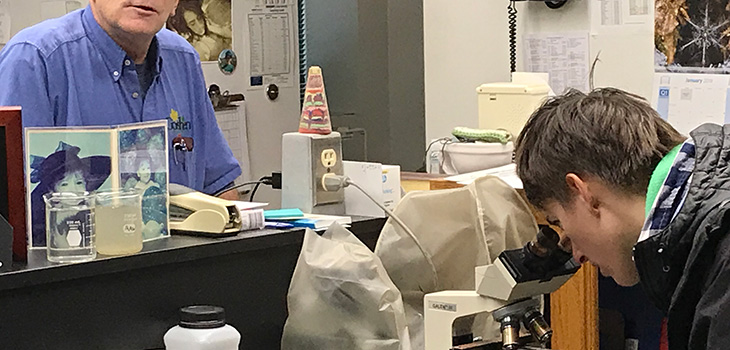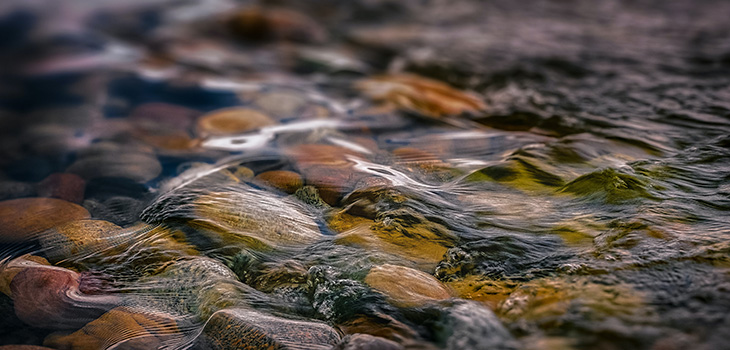 Volunteer Spotlight
Volunteer Spotlight
Duane Kauffmann, Goshen, Ind., is a retired professor with a unique passion: snail taxonomy. Following a May 20 slide show over lunch, Duane presented the Merry Lea Team with a pictorial notebook and display cases documenting the 31 species of snails he has found on Merry Lea property so far.
Duane began his field research on Merry Lea’s land snails a year and a half ago when he asked Executive Director Luke Gascho for a species list of the nature preserve’s snails. Since there was none, Duane volunteered to create it.
Sifting through leaf litter
His quarry is tiny. The species that fascinate him are measured in millimeters and are best found by taking gallon-sized bags of leaf litter home and running them through screens. Most of the snails in his collection are smaller than a pencil eraser; a few are so tiny they look like insect frass. Duane refers to a species a half inch in diameter as “a large snail.” They live along shorelines and in prairie thatch; under woodpiles and under rocks in the gravel pit.
Duane became interested in land snails by way of marine biology. He first researched marine snails as part of his work with Goshen College’s marine biology program in the Florida Keys. His fascination with malacology (the study of mollusks) includes frequent trips to shell shows in the winter and blue ribbons for his displays of micro-shells.
Unlike their flashier marine cousins, the typical land snail is a modest shade of brown. Vivid common names make up for the bland coloring. The obese thorn, carved glyph and three-whorled ram’s horn are a few of the species in the collection. Duane says his favorite genus is the Gastrocopta, or snaggletooth snails.
Snails’ place in the ecosystem
Snails are an important part of woodland ecosystems. Since they ingest calcium in order to build their shells, they are an excellent source of this mineral for larger animals. Crabs, salamanders, birds, larger snails and some insects are a few of the species that depend on these tiny mollusks that humans easily overlook.
Duane has not found any rare snails on Merry Lea’s property, but his survey confirms good populations of the common snails. Land snails are hardy and likely to survive as long as there are woodlands to sustain them. Freshwater snails are more vulnerable due to their dependence on good water quality, and the most endangered mollusks are the freshwater clams. Duane hopes to learn more about these troubled invertebrates in the future.
Resources
Land Snails of West Virginia
by Daniel Dourson and the West Virginia DNR, 2016. Much of this book applies to Northern Indiana as well.
The Snail Wrangler
This website “promotes awareness about the importance of land snails in the ecosystem to general audiences.”



